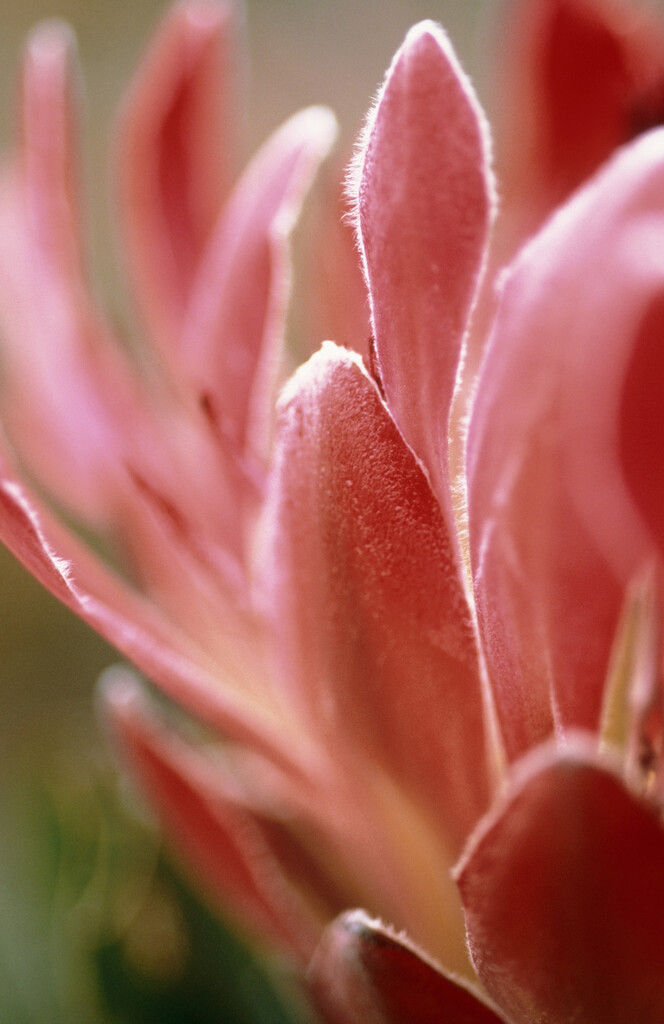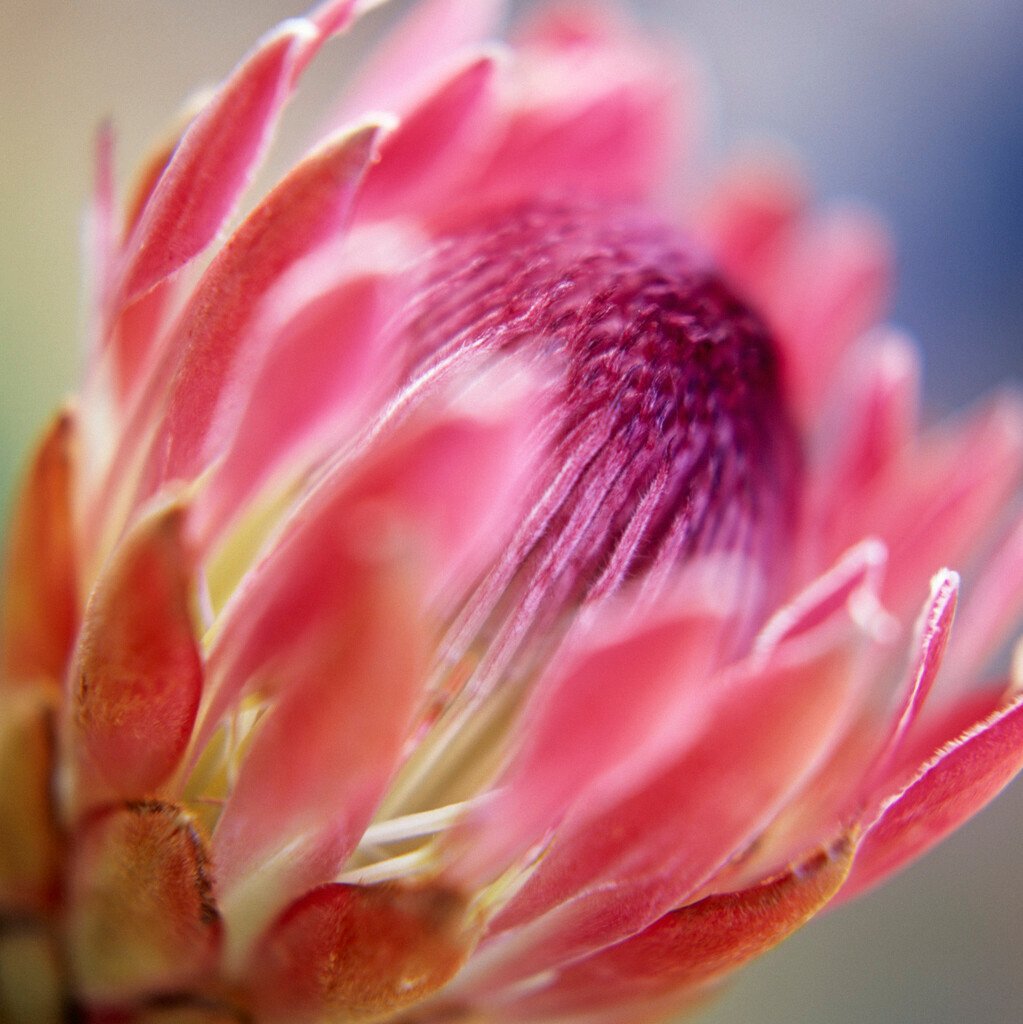Protea eximia
duchess protea
A large shrub or small tree to 4m, with robust, sparsely branched stems and leathery, glaucous, grey-green, sometimes purple-flushed leaves. In early summer it bears cone-shaped flowerheads to 14cm across, with red bracts fringed with white hairs
Size
Ultimate height
2.5–4 metresTime to ultimate height
10–20 yearsUltimate spread
2.5–4 metresGrowing conditions
Moisture
Well–drainedpH
Acid, Alkaline, NeutralColour & scent
| Stem | Flower | Foliage | Fruit | |
| Spring | Green Grey Silver | |||
|---|---|---|---|---|
| Summer | Red | Green Grey Silver | ||
| Autumn | Green Grey Silver | |||
| Winter | Green Grey Silver |
Position
- Full sun
Aspect
South–facing or West–facing
Exposure
ShelteredDrought resistance
Yes Hardiness
H3Botanical details
- Family
- Proteaceae
- Native to GB / Ireland
- No
- Foliage
- Evergreen
- Habit
- Bushy
- Genus
Protea are evergreen shrubs or trees, with leathery, simple, entire leaves and dense terminal clusters of tiny 4-petalled flowers, surrounded by large, petal-like bracts
- Name status
Correct
- Plant range
- South Africa
How to grow
Cultivation
Under glass grow in a mix of 1 part loam with added charcoal and 3 parts equal measures of grit (or perlite) and peat substitute, in full light. Water moderately in spring and summer. Apply a liquid fertiliser of magnesium sulphate and urea, both at half recommended strength, once in spring and again in early autumn. Water sparingly in winter. Outdoors grow in poor, well-drained soil in full sun
Propagation
Propagate by seed or semi-ripe cuttings
Suggested planting locations and garden types
- Coastal
- Mediterranean climate plants
- Sub-tropical
- Patio and container plants
- Conservatory and greenhouse
- Cut flowers
Pruning
See pruning group 1
Pests
Generally pest-free
Diseases
May be susceptible to honey fungus (rarely)
Get involved
The Royal Horticultural Society is the UK’s leading gardening charity. We aim to enrich everyone’s life through plants, and make the UK a greener and more beautiful place.

